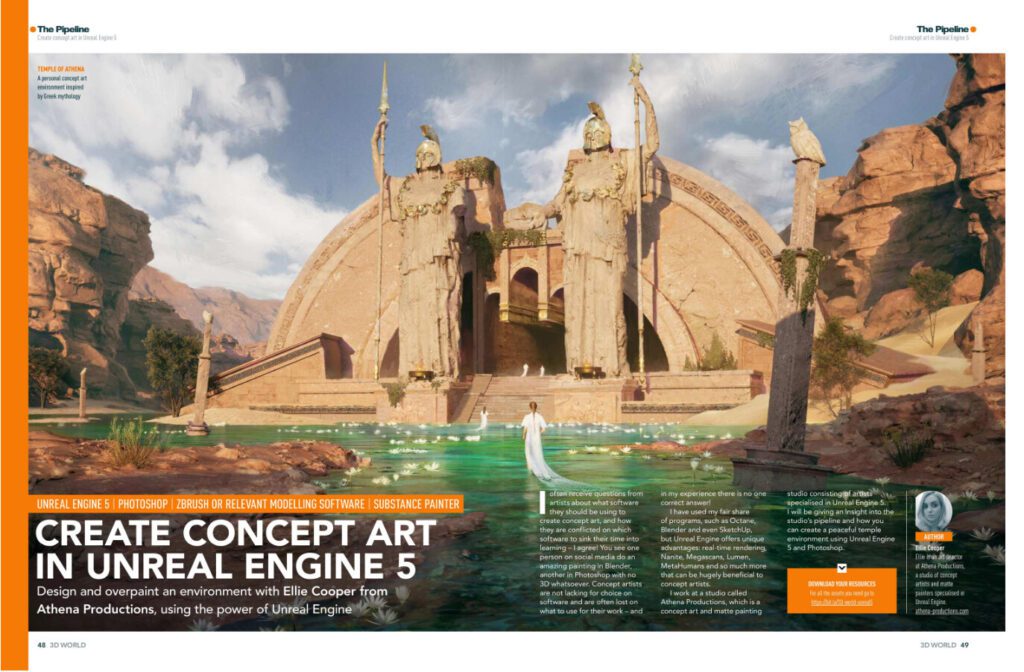Unreal Engine is a game development platform that allows developers to create stunning interactive worlds. It is based on the Blueprint visual scripting system, making it accessible to developers without traditional programming knowledge. The process of creating a world in Unreal Engine involves conceptualization, level design, asset creation, lighting and effects, gameplay mechanics, optimization, and testing. Unreal Engine is not limited to games and is also used in various industries. With constant updates and new features, it continues to push the boundaries of game development and enable the creation of realistic and immersive worlds.
Introduction
Unreal Engine is a powerful game development platform that allows developers to create stunning interactive worlds. From immersive landscapes to breathtaking visuals, the engine enables game creators to bring their wildest imaginations to life. In this article, we will explore the intricacies of game development using Unreal Engine, providing an insight into the process of creating captivating and immersive worlds.
The Foundations: Basics of Unreal Engine
Before diving into the creation of worlds, it is essential to understand the basics of Unreal Engine. Developed by Epic Games, Unreal Engine is an advanced real-time 3D creation tool that provides a wide range of features and functionalities for game developers.
Unreal Engine is based on the Blueprint visual scripting system, allowing developers to create interactive gameplay mechanics without the need for traditional programming knowledge. However, for more complex functionalities, Unreal Engine also supports C++ programming.
Creating a World: The Workflow
The process of creating a world in Unreal Engine follows a well-defined workflow. Let’s explore the key stages involved:
1. Conceptualization
The first step in creating a world is conceptualization. This involves brainstorming ideas, defining the theme, and outlining the key elements of the game world. It is crucial to have a clear vision of what the world should look like and how it should function.
2. Level Design
In the level design phase, developers create the layout and structure of the world. This involves placing objects, building terrains, and defining the overall architecture. Unreal Engine provides a robust set of tools and editors to simplify the process of level design, enabling developers to bring their ideas to life more efficiently.
3. Asset Creation
Creating assets, including 3D models, textures, animations, and sound effects, is a critical aspect of building immersive game worlds. Developers can either utilize pre-existing assets from the Unreal Engine marketplace or create their own using software such as Autodesk Maya or Blender. Unreal Engine supports various file formats, making the integration of assets seamless.
4. Lighting and Effects
To enhance the visual appeal of the world, lighting and effects play a crucial role. Unreal Engine offers advanced lighting techniques and effects such as dynamic lighting, global illumination, and particle systems. These features allow developers to create stunning visual experiences, be it realistic natural lighting or magical fantasy settings.
5. Gameplay Mechanics
Unreal Engine empowers developers to implement complex gameplay mechanics using its Blueprint visual scripting system. From character movement and interactions to artificial intelligence and physics simulation, developers have full control over the gameplay experience. For more advanced functionality, developers can seamlessly transition to C++ programming within Unreal Engine.
6. Optimization and Testing
Once the world is created, it is essential to optimize its performance to ensure smooth gameplay. Unreal Engine provides various optimization techniques and tools to identify and resolve performance issues. Additionally, rigorous testing is conducted to identify and eliminate any bugs or glitches that may impact the player’s experience.
The Power of Unreal Engine
Unreal Engine’s capabilities extend far beyond the creation of game worlds. It enables developers to build games for multiple platforms, including PC, consoles, mobile devices, virtual reality (VR), and augmented reality (AR). Whether it’s a highly immersive single-player experience or a multiplayer online game, Unreal Engine offers the flexibility and scalability to cater to a wide range of game genres and player preferences.
Innovation and Beyond
Unreal Engine continues to evolve rapidly, pushing the boundaries of what is possible in game development. With constant updates and new features, developers are equipped with cutting-edge tools to create increasingly realistic and immersive worlds.
Furthermore, Unreal Engine is not limited to games. It is also utilized in various industries, including architecture, film, simulation, and virtual production. Its real-time rendering capabilities and intuitive workflow make it a popular choice for projects beyond the gaming realm.
Conclusion
Unreal Engine provides a powerful platform for creating stunning game worlds. From concept to implementation, the engine offers a seamless workflow, allowing developers to bring their imaginations to life. With its advanced features and constant innovation, Unreal Engine continues to shape the future of game development, enabling the creation of increasingly immersive and captivating worlds.
